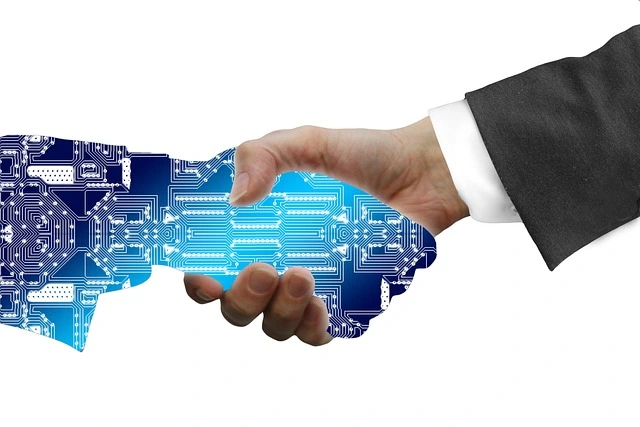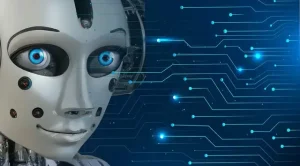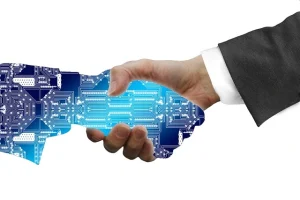Humans and AI: The Perfect Collaboration?

Artificial Intelligence (AI) is hitting almost every headline. Undoubtedly, it offers huge potential to help us work and live smarter. However, the ultimate advantages come from combining human brainpower and AI.
 A key strength of AI is its super-fast extraction of insights from a vast amount of data. Humans, however, offer a contextual understanding and interpretation of meaning not matched by technology. Human–machine collaboration saves time and retains human involvement, improving results as AI output is validated.
A key strength of AI is its super-fast extraction of insights from a vast amount of data. Humans, however, offer a contextual understanding and interpretation of meaning not matched by technology. Human–machine collaboration saves time and retains human involvement, improving results as AI output is validated.
Of course, the AI market is growing hugely. Statista reports: ‘The AI market size [worldwide] will grow beyond 184 billion U.S. dollars in 2024, a considerable jump of nearly 50 billion compared to 2023. This staggering growth is expected to continue with the market racing past 826 billion U.S. dollars in 2030.’
The result of ongoing learning and enhancement is that AI can now perform tasks previously thought of as beyond the capabilities of machines. It’s essential to remember that AI is no longer a trend; it’s integral to our way of life.
Human–machine collaboration in action
 Human–machine collaboration is when people and technology work together to achieve a common goal. Unlike coexisting or cooperating, collaborating involves working on the same project at the same time, in a shared workspace.
Human–machine collaboration is when people and technology work together to achieve a common goal. Unlike coexisting or cooperating, collaborating involves working on the same project at the same time, in a shared workspace.
Examples of human–machine collaboration are:
- Production lines with distinct tasks for people and robots.
- Warehouse picking (robots) for order fulfilment (people).
- Wellbeing, with data collated by technology passed to human therapists for fine-tuning recovery programmes.
- Whiskey blend created using AI-generated recipes (after analysing all possible combinations and customer feedback). The master distiller created the final whiskey… it sold out fast!
Opportunity vs threat
AI has taken the world by storm with promises of reducing costs and saving a huge amount of time. Understandably, many workers feel threatened by its potential – especially in heavily automated and/or repetitive industries such as manufacturing. However, joining forces with AI technology creates big opportunities. For example, human–AI collaboration offers:
- Increased speed and accuracy – improving productivity, efficiency and customer satisfaction.
- Flexibility – AI technology can be trained to respond to new requirements quickly.
- Reduced risk – tasks involving safety risks can require minimal human involvement.
- Optimised costs – improving productivity, inventory management and order fulfilment.
- More business success due to the speed and quality of tailored reports and bid submissions.
An ‘everyday’ example of human–AI collaboration is Microsoft’s Copilot. This AI technology assists Microsoft 365 users to use the Office suite of programmes as effectively as possible. For example:
- Word: writing, understanding and editing documents, avoiding that ‘where shall I start?’ moment!
- PowerPoint: creating impactful designs via single prompt, adding relevant existing content as needed.
- Teams: summarising key discussion and action points … in real time. No more notetaking!
- Excel: analysing trends and creating visual data representations, fast.
- Outlook: would you like to clear your inbox quickly? Copilot summarises long email threads and drafts suggested replies.
If you’d like to know more, please contact the EMH Technology team.
 It’s true that human–machine collaboration is set to change what the corporate world looks like. A report by Dell Technologies states: ‘We’re on the cusp of the next era of human–machine partnerships. Essentially, we’ve worked and lived alongside machines for centuries but by 2030, these partnerships will become deeper, richer and more immersive than ever before, helping us surpass our own limitations. These machines, fuelled by exponential increases in data, processing power and connectivity will open-up new possibilities, beyond our grasp today.’
It’s true that human–machine collaboration is set to change what the corporate world looks like. A report by Dell Technologies states: ‘We’re on the cusp of the next era of human–machine partnerships. Essentially, we’ve worked and lived alongside machines for centuries but by 2030, these partnerships will become deeper, richer and more immersive than ever before, helping us surpass our own limitations. These machines, fuelled by exponential increases in data, processing power and connectivity will open-up new possibilities, beyond our grasp today.’
The future will look very different … and 2030 is approaching fast! For now, harness the power and opportunities of today’s human–AI collaboration to benefit your business … and keep an eye on future potential. There are exciting times ahead!
